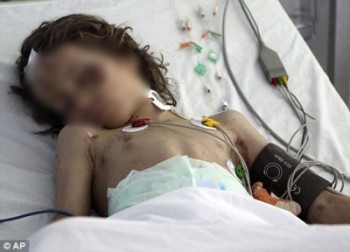
The Daily Mail published this close-up AP photo of Ruben in his hospital bed. StinkyJournalism blurred the image.
Where is the line between the public’s right to know and a severely injured, recently orphaned young boy’s right to privacy?
International media coverage of Ruben van Assouw, the 9-year-old boy and lone survivor of the plane crash in Libya, clearly ran amok.
The press ran photo after photo of a child who was all alone, in pain, in a foreign country with no family member to protect him from a shameless media throng as he recovered from surgery in his hospital bed. The countless reports and photos of Ruben show a heartless disregard for the boy’s health, safety and psychological well-being.
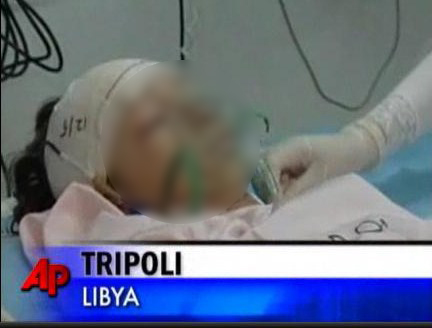
The Associated Press even produced a video of Ruben in the hospital. This screenshot from the AP video found on The Globe and Mail Web site shows how little Ruben’s privacy has mattered. iMediaEthics blurred Ruben’s face in this image.
However, even among these violators of the little boy’s rights, The Dutch daily newspaper De Telegraaf went way over the top. Radio Netherlands Worldwide (RNW) reported May 14 that De Telegraaf conducted a phone interview with Ruben just after he woke up from surgery. Radio Netherlands Worldwide writes:
“The paper claims it got the boy on the phone by accident, through his surgeon. The interview reveals how the boy bursts into tears as he realizes he is not talking to his family but to a journalist. It becomes clear he is not even aware the plane has crashed and his parents and brother are dead.”
De Telegraaf published the interview May 14. What appears to be an abridged version ran on its Web site, and a Google translation of the article is available here.
Expatica reported May 17 that the newspaper was forced to print an apology after it received “hundreds of angry reactions to the paper’s interview with the boy just after surgery.”
A whole controversy is swirling through the Dutch media about De Telegraaf‘s hospital bed interview. So why hasn’t there been even one American media comment or report critical about De Telegraaf‘s despicable actions? Is the American press too busy publishing–and profiting from– the boy’s hospital recovery photos and quotes themselves?
StinkyJournalism searched Lexis Nexis with the key words “De Telegraaf” and Ruben’s name and found no news results. A Google search of Ruben and De Telegraaf turned up several U.S. news articles. However, none of those articles were concerned with the ethics of interviewing a 9-year-old injured and orphaned plane crash survivor. Rather, they were interested in what the boy had to say. To their shame, The NY Daily News, AOL News, ABC News, Yahoo News, The NY Post, and USA Today all reported and used quotes from the interview.
The New York Post did close its article with: “The interview drew an angry rebuke from the Dutch Foreign Ministry, which accused the paper of violating the boy’s privacy, and asked the Libyans to keep reporters at bay.” But, the article featured a photo gallery and a large close-up photo of Ruben in his hospital bed with the caption: “Anguish: Libya jet-crash survivor Ruben van Assouw, in his bed, finally was told his parents and brother died.”
Doesn’t seem like The New York Post is that concerned about his privacy.
USA Today also buried one sentence in its article: “The interview angered Dutch officials since the foreign minister had asked the press to respect the boy’s privacy and not contact relatives of the victims, the Dutch state broadcaster NOS reported.” But, like The New York Post, USA Today also devoted more sentences to quoting from the interview than mentioning criticism of it.
The De Telegraaf‘s editor’s note is available in a Google translation here. The note, signed by the chief editor, excuses that the newspaper wasn’t trying to abuse Ruben’s situation. The editor wrote that the newspaper regrets that readers thought it was improper to run the interview. But, the editor doesn’t seem to actually apologize for the interview.
De Telegraaf is the largest newspaper in The Netherlands. The daily newspaper has a circulation of 808,000 and an average reach of 2.4 million people, according to Sovereign Publications.
The Dutch newspaper NRC Handelsblad wrote May 17 that De Telegraaf justified its interview by calling Ruben not flesh and blood with feeling but “a symbol of life in the middle of a tragedy.” NRC Handelsblad wrote May 17 that The International Federation of Journalists’ Declaration of Principles on the Conduct of Journalists says journalists should “use only fair methods to obtain news, photographs and documents.” Yet, NRC Handelsblad noted that the IFJ’s code, like the U.S. Society of Professional Journalists’ ethics code, is not binding and is written for each journalist to apply as he or she sees fit.
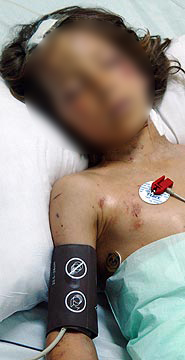
Is The Times Online´s close-up photo of Ruben in his hospital bed OK to publish? iMediaEthics blurred Ruben´s face.
–
NRC Handelsblad reported that legal scholar and University of Amsterdam professor Egbert Dommering said that even publishing Ruben’s picture is “a “serious violation of privacy” at odds with Article VIII of the European Convention on Human Rights, which guarantees respect for private life. In this context, he agrees that a post-surgery interview with the boy is over-the-top.
That article says:
1. Everyone has the right to respect for his private and family life, his home and his correspondence.
2. There shall be no interference by a public authority with the exercise of this right except such as is in accordance with the law and is necessary in a democratic society in the interests of national security, public safety or the economic well-being of the country, for the prevention of disorder or crime, for the protection of health or morals, or for the protection of the rights and freedoms of others.
“Disaster victims deserve to be protected,” NRC Handelsblad reported that Dommering said. NRC Handelsblad reported that Dommering noted that “in this case, public interest did not provide an overriding justification for the publication of the disputed images.”
Radio Netherlands Worldwide wrote May 14 asking “at what point does news gathering turn into stalking?” The radio report noted that “close-ups of Ruben’s swollen face, as he lay with a respirator in a Tripoli hospital, were shown across the world” and that while some Dutch newspapers took pictures of Ruben from a distance, others got very close-up.
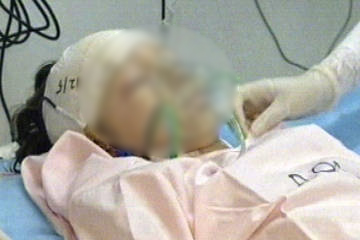
Close-up photos of Ruben in the hospital have been published by media outlets worldwide. The Globe and Mail published this photo of Ruben, which iMediaEthics blurred.
“One newspaper published the complete names of the victims, along with their hometowns. Various media have copied pictures of the victims from social media such as Facebook, and called on their relatives at their homes,” Radio Netherlands Worldwide reported.
Libyan Government Involvement in Privacy Invasion
Responsibility for the media’s invasion of Ruben’s privacy starts with the Libyan government. Instead of protecting the small boy’s privacy, the government sanctioned breaching it. Libyan leader Muammar Gaddafi’s son, Seif al-Islam, even stopped by Ruben’s hospital for a bedside photo op. Ruben was a media opportunity not a child to protect. Al-Islam could have prevented access to the boy as he runs the national media company, Al-Ghad.
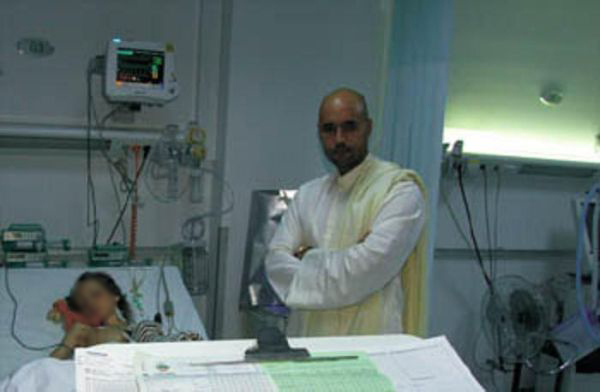
Libyan leader Muammar Gaddafi’s son Seif al-Islam took a bedside photo with Ruben. iMediaEthics blurred Ruben’s face in this photo published by De Telegraaf.
And, the only peep from Al-Ghad about issues with the coverage of Ruben isn’t a concern for his privacy. It’s a complaint that Al-Ghad photographer Mabruka Ruben Mansur was “attacked” by Ruben’s doctors when she was trying to take pictures of the boy leaving the hospital, reported (Australian) Albuquerque Express and De Telegraaf.
For a larger context, Reporters Without Borders put Gaddafi on its list of 40 freedom predators this year. iMediaEthics wrote about the list May 3. Reporters Without Borders noted that from 2007 until mid-2009, Al-Ghad offered the first non-governmental media in three decades. But, in mid-2009, all the media in the country was nationalized or banned.
We are contacting the Libyan government, De Telegraaf and the U.S. based, Society Of Professional Journalists (SPJ) for comment.
The SPJ ethics code advises to “show compassion for those who may be affected adversely by news coverage. Use special sensitivity when dealing with children and inexperienced sources or subjects.” and to “be sensitive when seeking or using interviews or photographs of those affected by tragedy or grief.”
Make no mistake about what’s going on here. When big American media companies use the photos and the quotations garnered from this poor child’s bedside interviews and post-surgery “press conferences,” they are in bed with the cruel dictatorship that allowed such exploitative violation of a defenseless and wounded child’s tragedy to occur.




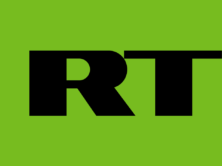

Comments Terms and Conditions